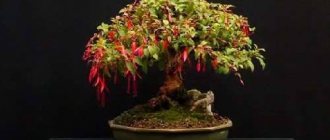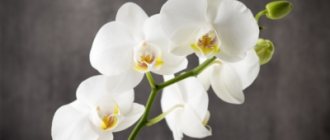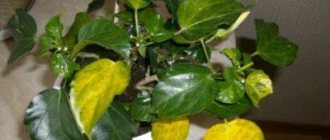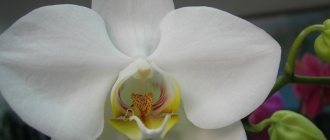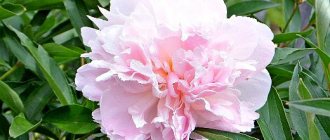Indoor orchids can bloom all year round. But even unpretentious phalaenopsis still have pauses in flowering sooner or later. If the care is correct, you won’t have to wait long for the growth of flower stalks and the appearance of new buds. But even after the buds begin to grow, flowering is not at all guaranteed. At the budding stage, orchids are extremely sensitive and can shed long-awaited buds in a matter of days. And too unexpected falling of flowers is not at all uncommon. The reason for the dropping of orchid buds is always the same - improper maintenance conditions and care. And it is much easier to prevent them than to overcome disappointment from the consequences.
Why does an orchid shed flowers and buds?
Different reasons - one problem
Dropping buds and flowers in orchids is a natural defensive reaction, indicating stress factors or a lack of resources. No matter how much disappointment the sight of yellowing and falling buds brings, it should not be considered a tragedy. One of the most obvious signs and signals will help you quickly identify the problem and solve it in a timely manner.
There are dozens of reasons why orchids may lose buds or already blooming flowers. And almost always this phenomenon is associated with “emergency” factors - a change or selection of conditions and factors of care. With one exception: weakened and old plants shed flowers for completely natural reasons.
To discover the source of problems, it is enough to ask yourself 6 basic questions:
- Have the orchids' placement and conditions changed in recent weeks?
- What condition is the substrate in and is it and the container suitable for orchids?
- Are the lighting and temperature appropriate?
- Is watering carried out correctly and how dry is the air?
- Are fertilizing standards observed?
- Are there any signs of pest or disease damage?
It is the answers to these questions that will suggest not only the possible “culprit” in dropping the buds, but also the next steps. No matter what stage of budding and flowering the orchid is at, you need to respond to such a signal as quickly as possible and without panic.
Causes of natural wilting
Slow and gradual withering of buds is a natural physiological process. In this case, there is no reason to worry: the plant will accumulate strength and after a while it will bloom again.
A reduction in flowering time and rapid wilting of buds may be due to the age of the plant. If it is more than 7 years old, it will not bloom for more than 2 months. There is a chance of getting an old copy that will fade very quickly when buying second-hand. In this case, creating ideal conditions and following the rules of care will not help.
Advice! You can slightly extend the flowering period by placing the orchid in a cold room for a while and reducing watering. This technique will slow down the natural wilting of the buds.
Pests and diseases
As with any indoor plant, at the first sign of problems, you should immediately exclude the most dangerous factors that require drastic measures - infestation with pests or diseases. A careful examination of the plant itself, all the leaves, roots, buds will help you find traces of mealybugs, rot, etc.
If there is the slightest suspicion, the plant must be immediately isolated and measures taken - from washing and biological agents, the use of insecticides and fungicides to emergency replanting with pruning of damaged roots.
If there is the slightest suspicion of infection, the orchid should be immediately isolated and measures taken
Step-by-step instructions: what to do to save the plant?
To save the plant, you need to know what to do next with the orchid if all the flowers and buds have fallen off.
With blossoming flowers
- Isolate the plant from other potted crops.
- Carefully examine the leaves, axils, and root areas. If signs of disease or pests are detected, treat.
- Provide comfortable temperature conditions: 20-24°C during the day and 15-18°C at night.
- Increase air humidity if it is insufficient.
- Maintain soil moisture, avoiding overdrying or waterlogging.
- Avoid drafts.
With unopened buds
- Isolate the plant.
- Conduct a thorough inspection of all parts of the plant. If pests or signs of disease are detected, treat the orchid.
- If the pot has been moved, return it to its original place in the same position.
- If there is a lack of light, equip additional lighting with a fluorescent lamp.
- Analyze the watering schedule and adjust in cases of dehydration or overflow of the substrate.
- Provide plant nutrition, paying attention to phosphorus-potassium ingredients.
- Check the temperature.
- If the air is extremely dry, provide humidification.
Relocation and relocation
Not a single orchid at the flowering stage likes changing conditions, even moving from one place to another on the same windowsill or turning in relation to the light source. Stability is the main secret of long-term flowering of any orchid. And if it is not there, the plant’s first reaction to sudden changes is to drop its buds. Even more stressful is transporting a blooming orchid from a flower shop to an “unfamiliar” house or to rooms with different functionality.
No matter how much the transition is softened, the plant will still notice it. This is a natural process of adaptation that requires non-intervention, rather than transplanting, looking for a new place and further aggravating the problem. All you need is time and patience: once the plant gets used to it, the whole process of development and the next flowering will proceed as it should.
When is shedding natural and when is it not?
The flowering of an orchid begins with the smooth and slow opening of a bud located closer to the end of the peduncle. First, the side and upper petals unfold, and then the lip and the entire flower open. This happens within 24 hours.
The flower lasts 2-3 days. Then it withers, dies and falls off. This is a natural process. The flower that opens first falls first. With a sudden drop, the flowers wither and fall chaotically, regardless of the beginning of the opening of the buds.
Important! To track the development of flowers, when purchasing, it is better to choose plants with barely opened buds.
Soil problems
Orchids require a special substrate. But even when choosing a special soil for orchids, consisting mainly of large fragments of bark, it is worth remembering that without regular replanting, such a substrate will sooner or later deplete and deteriorate.
If other causes have been ruled out, immediately check the soil for signs:
- seals, insufficient air permeability;
- traces of mold and rot both on fragments of bark and on the walls of the container.
If replanting has not been carried out for more than 3-4 years, the mass of roots has almost completely hidden the substrate, then the orchid may drop its buds due to depletion and lack of soil.
Be sure to make sure that the plant has enough air: whether the holes for its circulation are closed, whether the container is suitable for growing, because even phalaenopsis will not grow in any pot that comes to hand.
To prevent the special substrate for orchids from becoming depleted and deteriorating, they need to be replanted regularly
Fighting bud drop
Orchid flowers often fall off due to stress. If appropriate measures are not taken, the phalaenopsis can quickly become ill and it will be difficult to save it. Indicators of problems in an epiphyte are unnatural inward curling of the petals and drying out of the corolla.
With proper care, flowers do not fall off
As soon as the phalaenopsis has dropped unblown buds or already formed corollas, immediate measures will need to be taken.
- If the corollas have fallen off due to violation of the rules and procedures for watering, then you will have to change the tactics of caring for the epiphyte: increase or decrease watering, replace it with spraying.
- In the case when the leaves of a phalaenopsis have fallen off or withered along with the loss of flowers, it is necessary to exclude the presence of parasites or identify foci of fungal diseases. If the source is found, you should get rid of it using chemicals.
- If phalaenopsis petals fall off due to low temperatures or overheating, provide the epiphyte with comfortable living conditions as soon as possible.
If the number of fallen petals increases and the leaves fall off for no apparent reason, it means that the epiphyte does not have enough nutrients. In this case, the cause of wilting of the phalaenopsis bud branch is eliminated by applying complex fertilizers intended for such plants.
Lack of light and extreme temperatures
During budding and flowering, orchids of any type need more light than during other phases of development. And consistency of light is the key to their continued flowering. In autumn and winter, if the plant was not moved to a lighter windowsill or measures were not taken to provide additional lighting, the dropping of buds can be considered a natural reaction to a lack of light. And if they were moved - to direct sun.
Orchids that love low temperatures at night do not react to minor temperature deviations. But if the plant is in a draft or experiences a temperature shock - it finds itself in extreme cold, or vice versa, next to heating devices - problems cannot be avoided. Any sudden changes are contraindicated already at the stage of peduncle development, and even more so at budding. Dropping buds is the first of the reactions.
In both cases, it is necessary to adjust the conditions to preserve the remaining buds and normal development until the next budding.
What to do if the orchid's flowers have fallen?
The orchid perceives any change in comfortable maintenance parameters as a stressful state and can react by drying out and dropping flowers - the plant enters the survival phase and eliminates all factors that interfere with this process. And since flowering takes too much effort, the buds and flowers of the orchid only get in the way.
It is not possible to stop the process of flower loss in a number of situations. The aging of a plant (over 7 years old), which does not have enough strength to open the formed buds, or the drying of flowers after pollination by random insects is natural and does not cause harm to the plant. The orchid needs standard care until a new shoot forms.
Old orchids often do not have enough strength to open their buds.
The shedding of buds is also irreversible due to the following reasons:
- death of roots from overwatering;
- frostbite of the above-ground part;
- sudden change in conditions of detention.
All flower stalks should be removed to facilitate the orchid's recovery process and care regimens adjusted.
All other factors of improper care that caused the tropical beauty to refuse to bloom can be quickly corrected to stop the buds from falling off and restore interrupted flowering.
A positive effect is achieved by eliminating violations of the watering and fertilizing regime, correcting temperature indicators, air humidity or illumination . It is also necessary to remove bouquets of flowers and fruits from the orchid - the ethylene they produce does not contribute to the opening of the buds.
By quickly diagnosing the reasons for the falling off of orchid buds and flowers and promptly changing the wrong aspects of maintenance, it is possible in some cases to ensure that the tropical beauty continues to bloom.
Such a favorable outcome can be hoped for with very minor and short-term violations of the conditions of detention, as well as with timely elimination of exposure to ethylene from fruits or cut flowers.
If negative changes in the conditions of detention were not detected in time and acted for a long time, this leads to the complete fall of the buds and flowers that have begun to bloom.
A plant damaged in this way requires an assessment of its condition and enhanced care and restoration measures.
Finding out the reason
To ensure proper care and restore regular flowering, it is necessary to find out the reason for the dropping of flowers and buds . This is achieved by visual inspection of the plant and analysis of all care regimens.
At the first stage, the possibility of pollination and the age characteristics of the “daughters of the air” are assessed. If the symptoms fit one of these points, then the orchids are left alone and wait for the next peduncle.
Otherwise, consider possible care errors that cause a stressful state in the plant:
- Lighting primarily affects the release of buds. For normal flowering, the exotic beauty needs bright and diffused light for at least half of the day. This is especially true during the cold season;
For full development, the orchid requires a lot of diffused sunlight.
- Temperature fluctuations in any direction can cause the fall of both blossoming flowers and closed buds. In summer, the cause may be overheating or burns of a plant exposed to direct sunlight for a long time. In winter, there are many more such factors: sudden changes in temperature due to a nearby central heating battery;
- cooling the roots and the plant itself, standing next to a window glass or on a cold windowsill (readings below +15°C are not advisable);
- influence of drafts.
Vegetables and fruits that emit ethylene.
- moving “daughters of the air” from place to place is not the best option for capricious beauties. This may cause flowering failure.
After identifying the cause that led to the loss of flowers, you should immediately begin to adjust the growing conditions.
Growing conditions
It is not always possible to return to standard care indicators after shedding flowers to restore a damaged peduncle, but careful implementation of all regimes will contribute to the rapid formation of new flower shoots.
Optimal lighting
It is created by placing the plant on the east or south side of the house with obligatory shading during the summer afternoon hours, which will save the orchid from burns. In the cold season, illumination with daylight spectrum lamps is required, especially in the evenings.
Exotic beauties are light-loving flowers; they respond positively to the creation of bright, long-lasting and diffused lighting.
Temperature
For comfortable growing of orchids, it should ideally correspond to 23 – 27 °C . To prevent sudden temperature changes, the plant is placed away from radiators and window glass ; in winter, it is good to provide a warm buffer on the windowsill. And be sure to protect your tropical guest from cold drafts.
Air humidity
Should be increased to optimal readings (55 – 70%) using humidifiers or water vessels. Regular “foggy” spraying of leaves in the morning will have a beneficial effect. It is possible to use the double bottom principle in a pot.
Proper watering
It is regulated by visual observation of the orchid: if there is no condensation on the inner surface of the pot, and the protruding roots have slightly changed color to a grayish tint, then it is time to carry out the next watering ( approximately once a week , but with mandatory adjustments due to temperature changes).
Determining the need for watering.
ATTENTION! Water for watering orchids should be warm and settled. Never water the “daughters of the air” with cold water!
Assessing the condition of the peduncle
If, after the massive fall of flowers as a result of care errors, the peduncle does not dry out, retains its erect position and green color, and the dormant buds at its base look alive and healthy, then there are prerequisites for repeated flowering on the same arrow . It is only necessary to adjust the plant’s maintenance regime.
A situation is possible when the top of the peduncle has dried up to half, and then a green stem with swelling dormant buds - meristems - has remained.
In this case, the dried part should be removed , leaving a small dry area (if you cut it down to a living stem, the stopped drying process may resume).
After the normalization of care schedules, the kidneys may give rise to a new arrow or children.
Checking the feasibility of saving the green arrow
In the case when the flowers have fallen, what to do next with the arrow depends on whether it has dried out or remains green. preserved after the flowers have been shed can still be of benefit to the orchid , since there are several dormant buds at its base. Under certain conditions, meristems are capable of forming new flower stalks, which gives reason to hope for repeated flowering.
In addition, meristems can participate in vegetative propagation of an orchid , forming one or more children. Therefore, it is not recommended to remove the green peduncle immediately after all the flowers have fallen off - you should wait for the possible awakening of the buds.
Find out the timing of the final removal of the peduncle
Some flower stalks, after the end of flowering or the unwanted shedding of flowers and buds, are capable of forming new arrows on their stems for more than one year. Therefore, the timing of the final removal of such peduncles may be postponed for several years.
Sometimes a new arrow may begin to grow on a dried peduncle.
ADVICE! It is advisable to cut off any peduncle of a healthy orchid only after it has completely dried naturally.
The healthy green arrow can be removed if necessary: if the plant is severely weakened and requires time to rest and recover.
Excessive watering
Orchids at the flowering stage prefer reduced watering. Even a long delay in subsequent watering rarely causes the buds to drop (although it may affect the overall duration of flowering). Any excessive, too frequent watering not only increases the risk of plant loss from rot, but also causes disturbances in growth and development, which also affects the dropping of buds.
Even such hardy orchids as phalaenopsis, which feel great in living rooms, do not tolerate too dry air during budding and flowering, dropping their buds. The operation of heating systems for them must be compensated for at least by spraying.
The operation of heating systems for hardy orchids must be compensated for at least by spraying
The use of folk and chemical remedies for prevention
For prevention purposes, you can use not only chemicals, but also folk remedies, which have been tested by experienced flower growers for many years.
Banana peel infusion
Cooking algorithm:
- Dry the peel of one banana.
- Pour 1 liter of water, leave for 72 hours.
- Strain, dilute with warm water in proportions 1:2.
Use the infusion for watering.
Onion peel decoction
Cooking algorithm:
- Remove the skin from 1 onion.
- Pour in 200 ml of water.
- Boil over low heat for 10 minutes.
- Let it brew for 2 hours.
- Strain.
Dilute with water to a light shade and water the orchids.
Potato fertilizer
Peel several potatoes, pour boiling water, leave for 30 minutes, strain. Cool to +35 degrees, use for watering.
Old and weakened orchids
Orchids bring joy for many years, and it would seem that the only sign of their aging is an increase in size. But orchids are also aging, especially the varieties that stimulate the holidays in flower centers. The maximum age of indoor orchids is from 7 to 12 years. They can begin to lose the ability to bloom as early as five years of age.
Even if an orchid has been tirelessly pleasing for almost a dozen years, sooner or later there will come a time when the old plant will not be able to bloom with the same success. The inability to “hold” formed buds and flowers on old plants is a natural process. And usually it is preceded by the formation of children - on the shoots or at the rosette, with which the old plant can be replaced.
If in previous months the orchid suffered from improper care or maintenance conditions, or was weakened for some objective reasons (fall, careless handling, etc.), the plant will not necessarily recover without releasing flower stalks. Rather, on the contrary: affected by stress factors, orchids often quickly produce flower stalks - sometimes several at a time.
But weakened plants simply do not have enough strength to produce all the buds. And the shedding of part of the ovaries or their drying out is a completely natural reaction. The process of “saving energy” is especially noticeable if the orchid has suffered from sunburn and has not been replanted for a long time, when there is not enough space for the development of roots.
Duration of orchid flowering
Each orchid specimen has its own unique flowering schedule: the beginning of bud formation often shifts by month , flowering can occur at any time of the year and more than once per season.
Orchids do not have clear flowering periods.
IMPORTANT! The timing and duration of flowering of an orchid depend on its type and the conditions created for the plant in indoor culture.
Even with proper care, the duration of preservation of the decorative appearance of flowers varies significantly, but on average it is approximately 3 months (a separate corolla can bloom for up to a month). Young orchids most often fade within a month; the flowering of some adult plants takes up to six months or more (if the flower has produced several peduncles, which subsequently bloomed in the second round).
